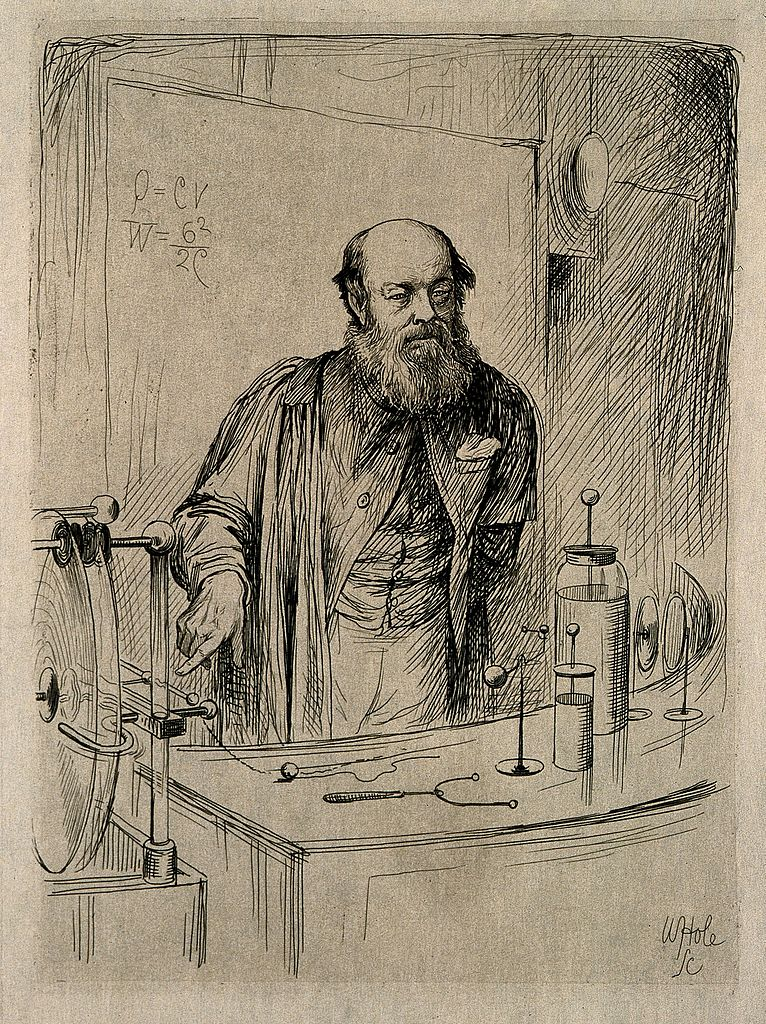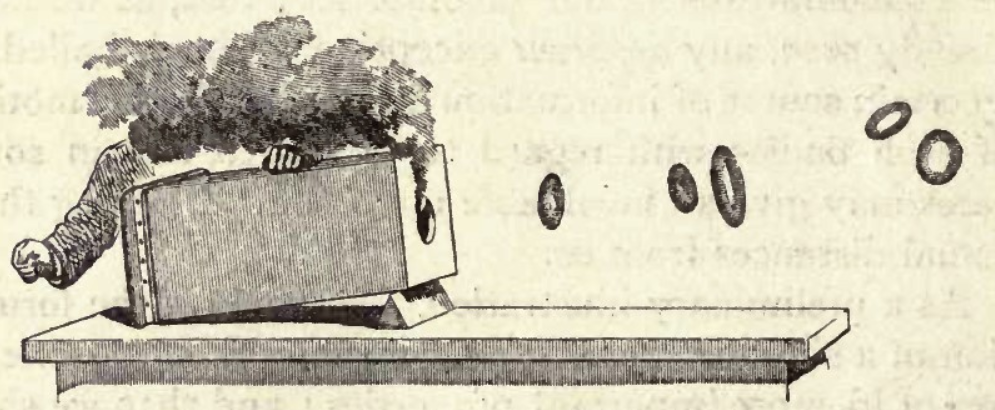The Knots of Peter Guthrie Tait
by Andy Boyd
Today, unweaving a tangled web. The University of Houston presents this series about the machines that make our civilization run, and the people whose ingenuity created them.
We find them on boat docks and in shoe laces. Boy scouts study them. They're knots, and at one time some of the finest minds in history thought they held the key to unlocking the mystery of atoms.
The story traces its roots to William Thomson - later known as Lord Kelvin - and his intellectual peer and friend Peter Guthrie Tait. By the nineteenth century atoms were an accepted part of physics, but details of what they looked like were in their infancy. At the same time, physicists held to the belief that the universe was permeated with an invisible medium called ether.

Peter Guthrie Tait, Etching by W Hole, 1884 Photo Credit: Wikimedia
In 1867, Tait showed Thomson an experiment he'd been working on - an apparatus for blowing smoke rings. The rings stabilized and held together using the same physics smokers use to blow smoke rings today.

Smoke rings Photo Credit: Peter Tait, Lectures on Some Recent Advances in Physical Science, Second Edition, p. 292 (MacMillan & Co., London, 1876)
Thomson was captivated with their beauty. Perhaps, he thought, atoms were simply knots of ether. The atoms of different elements, say hydrogen and helium, had different properties because they knotted the ether together in different ways.
The way in which Thomson's idea melded two different theories - ether and atoms - made it aesthetically pleasing. The esteemed James Clerk Maxwell went so far as to take up correspondence on the subject with Thomson and Tait.
Tait became so caught up with the idea that he undertook the task of categorizing knots. Tait's knots were just a little different than what we typically think of as knots. To get a mathematical knot, take a piece of rope, tangle it in any way you wish, but then finish the job by connecting the two ends. What makes the categorization process so difficult is that two identical knots may not look the same. Faced with two messy piles of rope on the ground, how do you tell if they're the same or different knots? That was Tait's challenge. And for knots up to a certain size he was quite successful. But more importantly, he'd started an entirely new area of mathematical research - knot theory - that continues to this day and extends far beyond the mere categorization of knots.

Knot table Photo Credit: Wikimedia

Blue Figure-Eight Knot Photo Credit: Wikimedia
Unfortunately, the same can't be said of Thomson and Tait's theory of atoms as knots in the ether, which never really got off the ground. Neither can Tait's dubious efforts to defend Christianity with an odd mix of pseudoscience and scripture. In the book The Unseen Universe, Tait and a coauthor envision a universe made of concentric rings of ether, each ring denoting an ever more perfect reality. It's no wonder that Tait was accused of blowing smoke rings, though for the many readers who wanted to hear that science and religion were compatible the book was a godsend. The Unseen Universe was a commercial success, with multiple editions and a sequel, Paradoxical Philosophy. It's a title that would have served well for a biography of Peter Guthrie Tait.
I'm Andy Boyd at the University of Houston, where we're interested in the way inventive minds work.
(Theme music)
Daniel Silver. "Knot Theory's Odd Origins." American Scientist 94 (2006). 158-165. See also: http://citeseerx.ist.psu.edu/viewdoc/download?doi=10.1.1.359.4688&rep=rep1&type=pdf. Accessed August 28, 2018.
Balfour Stewart and Peter Tait. Paradoxical Philosophy: A Sequel to The Unseen Universe. 2nd ed. London: MacMillan and Company, 1878. See also: https://archive.org/details/paradoxicalphilo00stewrich. Accessed August 28, 2018.
Balfour Stewart and Peter Tait. The Unseen Universe: Physical Speculations on a Future State. 3rd ed. New York: MacMillan and Company, 1875. See also: https://archive.org/details/unseenuniverse01unkngoog. Accessed August 28, 2018.
Peter Tait. From the Wikipedia website: https://en.wikipedia.org/wiki/Peter_Tait_(physicist). Accessed August 28, 2018.